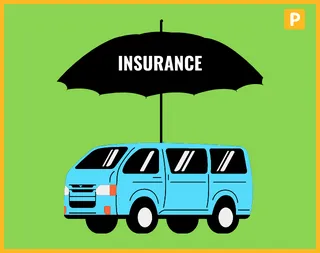What is Indemnity Insurance and how it Works?

Hello and welcome to primeeducate, today we will tell you what is indemnity insurance and other important details related to it so without any further delay let’s start.
Table of Contents
- What is Indemnity Insurance and how it Works?
- What Is Indemnity Insurance?
- How Indemnity Insurance Works
- When would one need an indemnity policy?
- What benefits do indemnity policies offer?
- Difference Between Indemnity Insurance and Life Insurance
- Indemnity insurance rates, how much does it cost?
- Is purchasing indemnity insurance usually worthwhile?
- Noteworthy points
What Is Indemnity Insurance?
An indemnity policy is, to put it simply, an insurance policy that covers a property defect. The monetary consequences of a third party filing a claim against the flaws are often covered by such plans. When the danger has been identified, they are often sought by a lawyer handling the property transaction, especially if the buyer needs a mortgage.
Indemnity insurance, which protects the property and is thus transferable between owners, is a one-time premium. The insurer will determine the precise number of years the coverage will be in effect.
The maximum indemnity should be larger than or equal to the purchase price of the property when a policy is first placed at risk. The policy will make this very clear. The limit of indemnification may need to be raised with a new premium due if the property is subsequently sold for a greater price. However, during the first few years of the policy’s existence, many insurers would automatically raise the limit of the indemnity by a certain rate.
How Indemnity Insurance Works
A comprehensive kind of insurance reimbursement for losses or damages is indemnity. In a legal sense, it might also mean a release from responsibility for harm. The insurer agrees to make the insured party whole for any covered loss in exchange for the premiums the policyholder pays.
A special kind of liability insurance for certain experts or service providers is indemnity insurance. Professionals in the insurance industry provide advice, knowledge, or specialized services. Indemnity insurance, often known as professional liability insurance, differs significantly from general liability insurance and other types of commercial liability insurance that defend companies against claims of property damage or physical injury.
Insurance against indemnity defends against claims brought because of alleged carelessness or inability to provide services that cause a client’s financial loss or legal entanglements. If a customer loses anything, they may make a civil claim. The court costs and any damages the judge awards as a consequence will be covered by the professional’s indemnity insurance.
Important: Along with an indemnity claim, indemnity insurance also covers court expenses, charges, and settlements.
In the same way that any other kind of insurance does, indemnity insurance pays for the expenses related to an indemnity claim, such as court costs, legal fees, and settlements. The insurance’s coverage level and price are determined by the terms of the individual contract, as well as the previous status of indemnity claims. Professional insurance plans like malpractice insurance and errors and omissions insurance are common types of indemnity insurance (E&O). These particular insurance plans defend or compensate professionals against lawsuits arising out of their professional activities.
When would one need an indemnity policy?
A broad variety of hazards are covered by indemnity plans, with the most popular coverage often relating to a lack of building regulations or planning approval. If the local authority served enforcement ordering the owner to modify or remove any construction that does not conform with planning permission or building regulations, this would pay the cost of any work that would need to be done.
Other typical regulations include:
- When a restricted covenant on the property’s title has been broken, a restrictive covenant is necessary.
- When significant papers containing unidentified restrictive covenants or limitations have been lost, missing information is necessary.
- When there are no legal rights of way or rights to connect to services, an easement is necessary.
- Lack of a build-over agreement: necessary when the Local Authority’s approval is needed to construct building works over a sewer or pipe.
There is other indemnity insurance available, and this is not a complete list.
Also Read: Likely loans | likely loans login | likely loans reviews
What benefits do indemnity policies offer?
An easy way to address problems with the property is via indemnity coverage. They provide a speedy resolution as opposed to the possibly costly and time-consuming procedure of getting in touch with the appropriate third party to secure the necessary treatment.
The cost of the insurance will vary depending on the property’s purchase price and the risk it is intended to cover. Policies might cost anything from £50 and £200. However, this is often considered a minor price to pay in order to reach an agreement on a transaction.
Difference Between Indemnity Insurance and Life Insurance
For premiums up to a specific amount, indemnity and life insurance plans both provide compensation for losses to an insured party. However, in the event that an insured individual passes away, life insurance pays out a lump payment to the designated beneficiaries. In contrast to indemnity insurance, the payout—known as a death benefit—is for the whole value of the policy, not just the sum of the claims.
Here is a clear illustration of how life insurance works. Consider Mr. Brown purchasing a $250,000 life insurance policy with his wife as the beneficiary. He pays the insurance company his monthly payments for the coverage. Mr. Brown perishes in an automobile accident ten years later. The insurance provider processes the paperwork and pays Mr. Brown’s wife the $250,000 coverage sum. If the insurance has a provision with an accidental death benefit, she could also be entitled to additional funds because he passed away in an accident.
Indemnity insurance rates, how much does it cost?
Indemnity insurance has a range of costs. The premium will vary depending on your property’s worth and the coverage provided by the insurance. You may have to pay a few pounds for a one-time coverage to cover the possibility of chancel repairs. However, an indemnity to cover construction work that lacks the proper certifications may be expensive, costing several hundred pounds. Indemnity insurance often ranges in price from £20 to £300.
Unfortunately, you can’t use comparison shopping websites to get cheaper insurance coverage. Indemnity insurance is offered by specialized insurance companies. Therefore, your lawyer or conveyancer will only give you a price.
Is purchasing indemnity insurance usually worthwhile?
Take the time to clarify the purpose of indemnity insurance if your conveyancing lawyer advises you to get it. Also, think about conducting your own research.
In a recent instance, a website visitor to HomeOwners Alliance received advice to purchase a pricey indemnity coverage. It was done to hide the fact that their porch lacked construction permits and planning approval. A quick check on the internet showed that the porch was constructed in the 1970s. This indicated that it was finished prior to the imposition of construction rules. Additionally, there was proof that a permit had been issued.
The final choice for protection against an issue that is difficult to solve is indemnity insurance. So, before you go for your wallet, be sure there isn’t a free solution to remedy the issue.
Fixing the underlying legal issue is always preferable to purchasing indemnity insurance’s “Elastoplast” option.
Make sure your lawyer arranges indemnity coverage with an “A” rated insurer if you do require one.
Noteworthy points
It should be noted that whilst indemnity insurance will cover the expenses associated with any third party making a possible claim, this does not guarantee the quality of the works when one is looking to protect against approval for work done at the property. To guarantee there are no problems, further inspections or surveys should be conducted.
If you are required to offer indemnity insurance, you must refrain from contacting any third parties since doing so would void it because indemnity plans operate on the assumption that no third party has been made aware of the flaw or possible danger.


